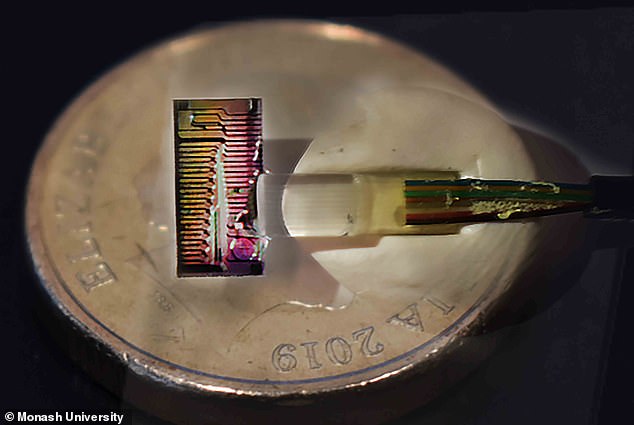Aussies transmit data at 44.2Tbps
by David MannersA team from the Australian universities of Monash, Swinburne and RMIT have achieved a data transmission speed of 44.2Tbps.

Researchers said they achieved this be using a micro-comb photonics IC.
Researchers installed 48 miles of optical fibre between RMITs Melbourne City Campus and Monash University’s Clayton Campus.
The microcomb chip – contributed by Swinburne University – was installed in the network delivering hundreds of IR lasers from one chip.
Micro-combs are optical frequency combs generated by integrated micro-cavity resonators. Using a powerful class of micro-comb called soliton crystals, the reasearchers achieved a line rate of 44.2Tbps using the telecommunications C-band at 1550 nm with a spectral efficiency of 10.4 bits s−1 Hz−1 bits using a single integrated chip source.
Soliton crystals exhibit robust and stable generation and operation as well as a high intrinsic efficiency that, together with an extremely low soliton micro-comb spacing of 48.9 GHz enable the use of a very high coherent data modulation format (64 QAM – quadrature amplitude modulated).
“We’re currently getting a sneak peek of how the infrastructure for the internet will hold up in two to three years’ time, due to the unprecedented number of people using the internet for remote work, socialising and streaming,” says Monash University’s Bill Corcoran, “what our research demonstrates is the ability for fibres that we already have in the ground to be the backbone of communications networks now and in the future.”